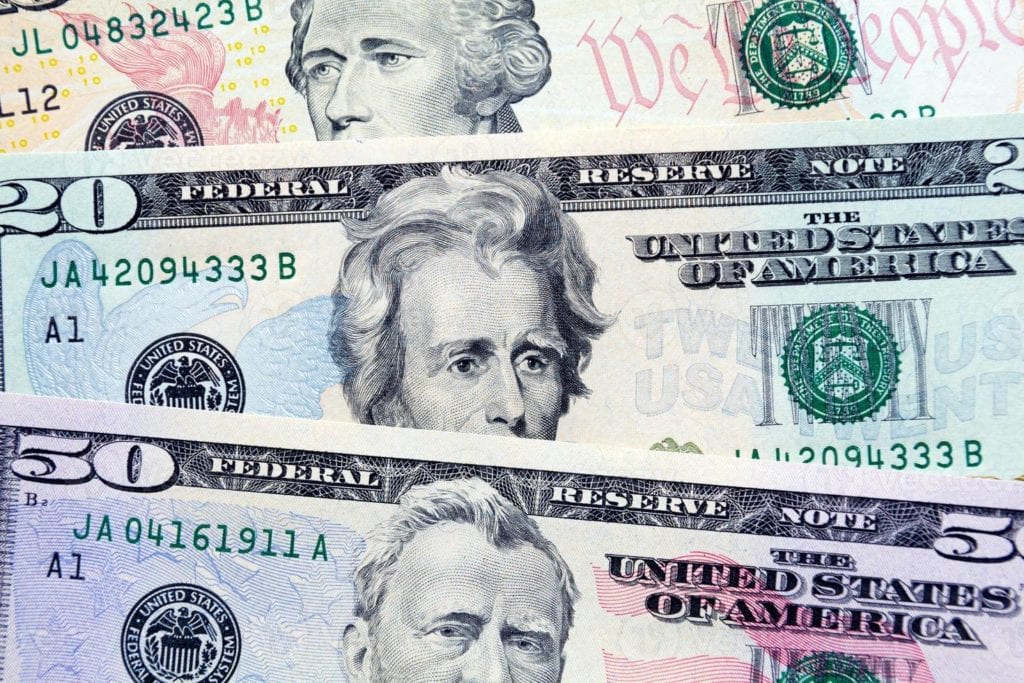By Paul J. Kozlowski
A house selling for $750,000 is worth more than one available for sale for $500,000. It’s the same with a $3 latte compared to a $2 cup of black coffee. The dollar serves as a unit of account for measuring the values of items. You can use paper money to purchase that latte, but paper money itself has no intrinsic value. Paper money is worth only what it can buy and it serves as a useful medium of exchange for many transactions.
In August of this year, the Federal Reserve reported $1.38 trillion U.S. currency in circulation, with $1.33 trillion of that in Federal Reserve Notes. We currently use those notes with portraits on each. Paper notes at or above $500 were discontinued in 1969.
Current Bills in Rotation
$1 – George Washington, 1st President, 1789
$2 – Thomas Jefferson, 3rd President, 1801
$5 – Abraham Lincoln, 16th President, 1861
$10 – Alexander Hamilton, 1st Secretary of the U.S. Treasury, 1789
$20 – Andrew Jackson, 7th President, 1829
$50 – Ulysses S. Grant, 18th President, 1869
$100 – Benjamin Franklin, American Patriot and Statesman
The images on the notes do not change often and we usually don’t consider gender when using dollar bills to pay for items. The U.S. Treasury plans, however, to add a woman’s portrait to the $10 bill in 2020. Womenon20s.org strongly recommends placing a woman’s image on the $20 bill. This is to celebrate, among other things, the 100-year anniversary of the 19th Amendment giving women voting rights in 1920. But, which note is chosen means removing or relocating a current image.
Did You Know?
Alexander Hamilton’s portrait on the $10 bill since 1929 reflects his historical significance.
- Hamilton recommended creating the U.S. Mint. The Denver Mint (1863) is now one of four coin-producing facilities.
- He paid all debts from the Revolutionary War and moved to establish an efficient, effective national financial system.
- He helped establish the (First) Bank of the United States with a 20-year charter and eight branches. It issued paper notes acceptable across states that accounted for about one-third of circulating money. Congress failed to renew its charter in 1811.
- Unlike Benjamin Franklin on the $100 bill, Hamilton was skeptical about extensive use of paper money.
Historically Speaking
President Jackson’s image on the $20 bill also reflects his historical significance. Jackson fought in the American Revolution and was a hero in the War of 1812. He advocated for the use of “hard money” – gold and silver. He also strongly opposed paper money being issued by a central bank. His portrait on the first $10 Federal Reserve Note in 1914 was ironic because those notes were issued by our nation’s new central bank.
- Jackson had convoluted interactions with the (Second) Bank of the United States, which issued paper currency, and vetoed its re-charter request in 1832.
- He removed federal government deposits from the bank so its loans plunged and its lending functions were taken over by state and local banks.
- State banks and state notes expanded rapidly after 1834.
- From 1836-1913 there was no central bank in the country and financial panics occurred in 1837, 1873, 1884, 1893 and 1907 before the Federal Reserve System existed.
Currency did not always look like Federal Reserve Notes today. The $20 bill issued by the National Bank of Denver illustrates a non-portrait piece of currency.
Source: www.antiquemoney.com
What woman’s image is likely to appear on a note? Surveys point to Eleanor Roosevelt and Harriet Tubman as favorites. But, the Bureau of Engraving and Printing has not revealed its choice. If a woman’s portrait appears on the $10 bill, as favored by the U.S. Treasury, then Alexander Hamilton’s position will change. The new bill will look different but we’ll adjust and use it to purchase items as usual.
Contributions
Dr. Paul Kozlowski, long time Corken + Company client, is professor emeritus of business economics and finance at the University of Toledo, and past-president of the Mid-Continent Regional Science Association. He has served as an advisor to business and government organizations for over thirty-five years, and his articles have appeared in a variety of economic publications and books. He holds a Ph.D. in economics from the University of Connecticut and lives in Denver.





